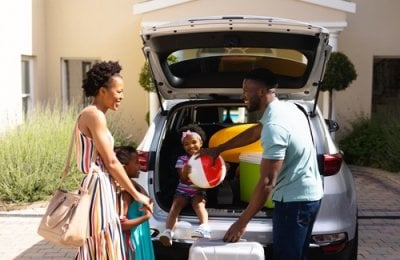
Reading Time: 8 minutes
The journey to get a drivers license in the US is a pivotal step toward independence! Especially for college students gearing up for campus life. As 2025 rushes by, it is important to understand the updated procedures and requirements. This comprehensive guide outlines the steps to get a drivers license in the US. Be well-prepared for the road ahead. Whether you’re a first-time applicant or assisting someone in the process, this guide will navigate you through each stage seamlessly.
As the academic year beckons, college students nationwide are gearing up for the return to campus, and at Nationwide Auto Transportation, we’re ready to facilitate a seamless transition.
Now, as the pace of life picks up, so does the preparation for college life, including the need for reliable transportation. If you’re a parent of a young adult who’s on the cusp of independence and college adventures, you’re likely considering how to best support them in this new chapter.
Whether it’s making sure that your soon-to-be college student has their vehicle on campus to make the most of their independence or coordinating transport for their move, Nationwide Auto Transportation is here to help. We understand the importance of having a piece of home with them, and a car can be just that—a familiar space and a means to explore this new stage of life.
Let us take the wheel when it comes to moving your child’s vehicle to college. With our trusted auto transport services, you can cross one more thing off your college prep list.
Your Passport to Freedom | A Drivers License
If you’ve completed the process before, you’ll know that it’s pretty straight-forward, but if this is your first rodeo, you probably have many misgivings. The main issue for most parents is whether this little child, whose diapers you used to change, is really ready to get behind the wheel of a powerful machine. It’s unfathomable.
Yet, here we are, looking for the best cars to buy for first time car owners…

That’s not to mention the thought of a 19-year-old driving across a number of states by themselves to college when school starts again. It’s becoming the norm for parents to opt for flying the kids to school while shipping their cars over. But it all starts with that one extremely important document, namely the driver’s license, which allows the bearer to legally operate a motor vehicle in the United States. A valid U.S. driver’s license is valid in all the states and in Canada.
Most people obtain a basic driver’s license which allows them to operate a car. But there are different categories of licenses for different vehicles, such as trucks, buses, taxis and motorcycles. In some states, individuals under the age of 21 are issued with a vertical orientation driver’s license. That helps establishments to easily identify whether the individual is of legal drinking age, while others use a bold red print to write “under 21” on the card.
How to Get a Drivers License in the US
You probably got your drivers license a long time ago, so we’ll go over the basics again:
Study the driver’s handbook and take the written test.
Your state’s DMV website should have the latest version of the driver’s handbook available for download. It is possible to find copies elsewhere as well, but they may not necessarily be the latest version.
This book contains all the road rules and driving safety guidelines you need to understand in order to be a competent driver. You are responsible for ensuring that you know all these rules, even if you’re not tested on them all.

Depending on the state in which you live, you must be between 14-16 years old to apply for a learner’s permit. In most states, individuals under the age of 18 must hold their learner’s permit for a minimum of 6 months to a year before applying for a full drivers license. Learner drivers under the age of 18 may have more restrictions than adult drivers.
Some states will require that you complete driver’s education before applying for your learner’s permit.
No matter where you apply, you will have to provide a range of documents to verify your identity and residency. These documents will vary by state, but typically include the following:
- Proof of identity (birth certificate, state-issued I.D. or a passport)
- Proof of residency (bank statements or utility bills in your name and with your home address)
- School transcript (if you’re under 18)
The DMV may also require proof that you attend school.
Pay your testing and permit fees
There’s a fee payable before you can write the test and obtain your learner’s driver’s permit. Once you’ve paid, you can schedule your test. If you need an interpreter or to write the test in a different language, you should arrange that at the time of scheduling the test.
The objective of this written test is to see whether you have a basic knowledge of the traffic rules and driving regulations contained in the handbook.
Next, you must pass the vision test in order to safely operate a motor vehicle. Depending on the result of the eye test, you may receive an endorsement that requires that you wear corrective lenses. If you are pulled over and caught without them, you may be cited for driving without a permit.
Have your eyes tested
In order to get your learner’s permit, you must prove that you can see well enough to operate a motor vehicle. If you fail the vision test, you need to speak to an optometrist who can provide you with the appropriate treatment before you will be able to obtain your learner’s permit.

Already wear glasses or contact lenses? If it is a light prescription and you only wear the glasses occasionally, it’s recommended that you try to pass the test without them. If you can’t pass the test without glasses, you must wear them to the test center and whenever you drive.
The examiner will give you an endorsement stating that you wear corrective lenses. When you drive, be sure to wear your glasses whenever you drive, as your license will be considered invalid if you are pulled over and you are not wearing your glasses.
Receive your learner’s permit
Passed the vision and written tests? Well done! Provided your documents are in order, you are now qualified to get your learner’s permit.
The next step is to have your photo taken and to accept your permit. When you receive it, note the following:
Expiry date – A learner’s permit is valid for a certain period of time, depending on the state. During that time, you need to learn to drive and take your driver’s test in order to obtain your full driver’s license. If you can’t make it, apply to have it renewed.
Minimum time frame – Depending on your age, the state may require that you have the learner’s permit for a specified time frame before you can take the test for your full license.
Practice hours – While the learner’s permit is theoretical, the driver’s test is very much practical. In other words, now is the time to learn to drive. Depending on which state you’re taking the test in, you may have to log a certain number of practice hours before you can take the driver’s test.
Learn to Drive

For the next step in your driving career, your goal is to ace the driving test. It may seem like a pain and a waste of time if you already know the basics… but remember, we need more competent drivers on our roads. It’s worth your while to invest that extra little time to ensure that you’re a safe and responsible driver.
So how do you learn to drive?
- Study the driver’s handbook for the written test, which might be longer and more comprehensive than the learner’s permit test.
- Use practice tests available on the DMV site or at the back of the handbook. You can also find practice tests on smartphone apps.
- Find someone to help you practice. When driving with a learner’s permit, you typically need to have a licensed driver over the age of 21 in the car with you at all times. Find someone who is an experienced driver who is also very patient. Remember, practice makes perfect!
- Take driver’s ed. High school students can often take driver’s education classes for free or at a reduced rate at school.
- Take any other required courses, such as drug and alcohol traffic awareness.
Schedule your driving test
Some DMVs are quiet, and you can take your test at any time. However, it is usually best to schedule an appointment to help avoid wasting too much time waiting.
Be sure to take along a licensed driver to drive you there, especially if you have to bring your own car – as per some state laws.
Upon arrival, you will be required to complete an official application form. People under the age of 18 must have the form signed by a parent or guardian. They will also require original documents to help prove your identity and place of residence.
However, it’s a good idea to ask up front what you need to bring along and to find out how much the test will cost.
Ace Your Drivers License Test and Secure Student Auto Transport
Conquer the Written Drivers License Test
Tackling the written driver’s license test marks a pivotal moment in your journey to independence. Examiners actively challenge you with hypothetical scenarios to verify your mastery of the road’s rules. Success in the written test leads directly to the practical examination, where a driving examiner evaluates your skills, ensuring you adhere to all traffic laws.
Immediate Results, Next Steps, and License Acquisition
Most applicants receive their results instantly. A fail may mean a wait before a retake, but success brings you closer to full driving freedom. Upon passing, your photo captures the milestone, and with all documents verified, you pay for and receive your full license.
Transitioning from Learner’s Permit to Independence
The leap from learner’s permit to a driver’s license symbolizes our teens’ growing independence. But when it’s time for your college-bound child to have their car on campus, solo cross-country driving might not be wise.
Invest in Safe Student Auto Transport
Consider the safe, reliable option of student auto transport. At Nationwide Auto Transportation, we offer back-to-school discounts and provide free auto transport quotes tailored for students.
Request a Student Auto Shipping Quote Today!

Is your student heading back to college? Don’t let them navigate the journey alone. Contact us for a student auto shipping quote and learn about our services tailored to your needs:
- Explore our Student Auto Transport solutions.
- We ship to all Locations in the US—your student’s car will safely arrive at college.
- Choose between Open or Enclosed transport options for the perfect balance of value and protection.
- Have an RV that needs shipping? We’ve got the expertise.
- Ready for peace of mind? Get a Quote now and ensure your student’s vehicle arrives safely and on time.
Let us navigate the logistics while you and your student focus on the road ahead. Secure your auto transport with Nationwide Auto Transportation today!



